Scuba Diving at Silfra Fissure
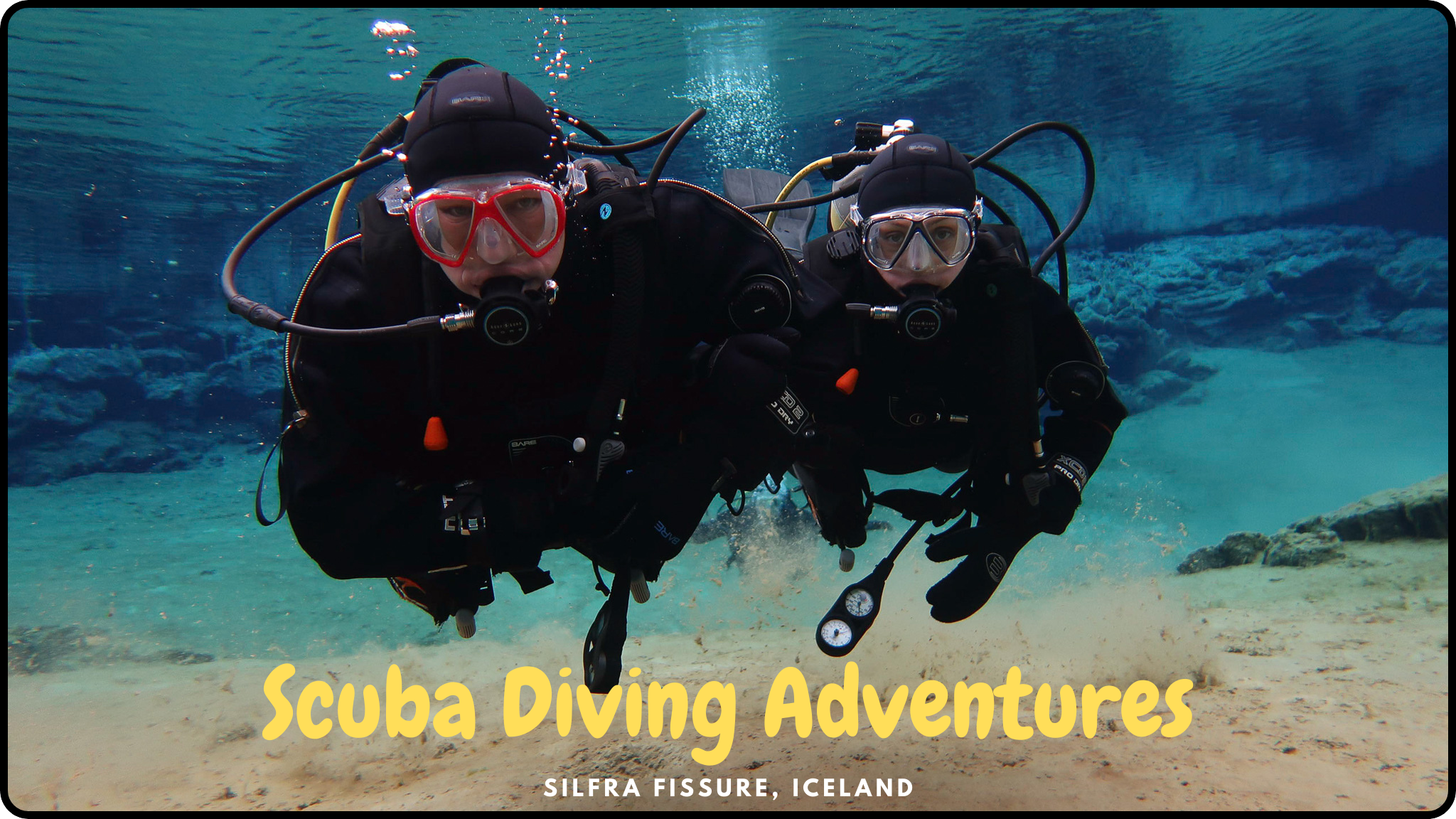
One of the adventures I looked forward to most when visiting Iceland last year was the opportunity to dive in Silfra in the Thingvellir National Park.
There are two exciting draw-cards to diving at Silfra—the famously clear water and the fact that the dive occurs in the fissure between the continental plates of Europe and North America.
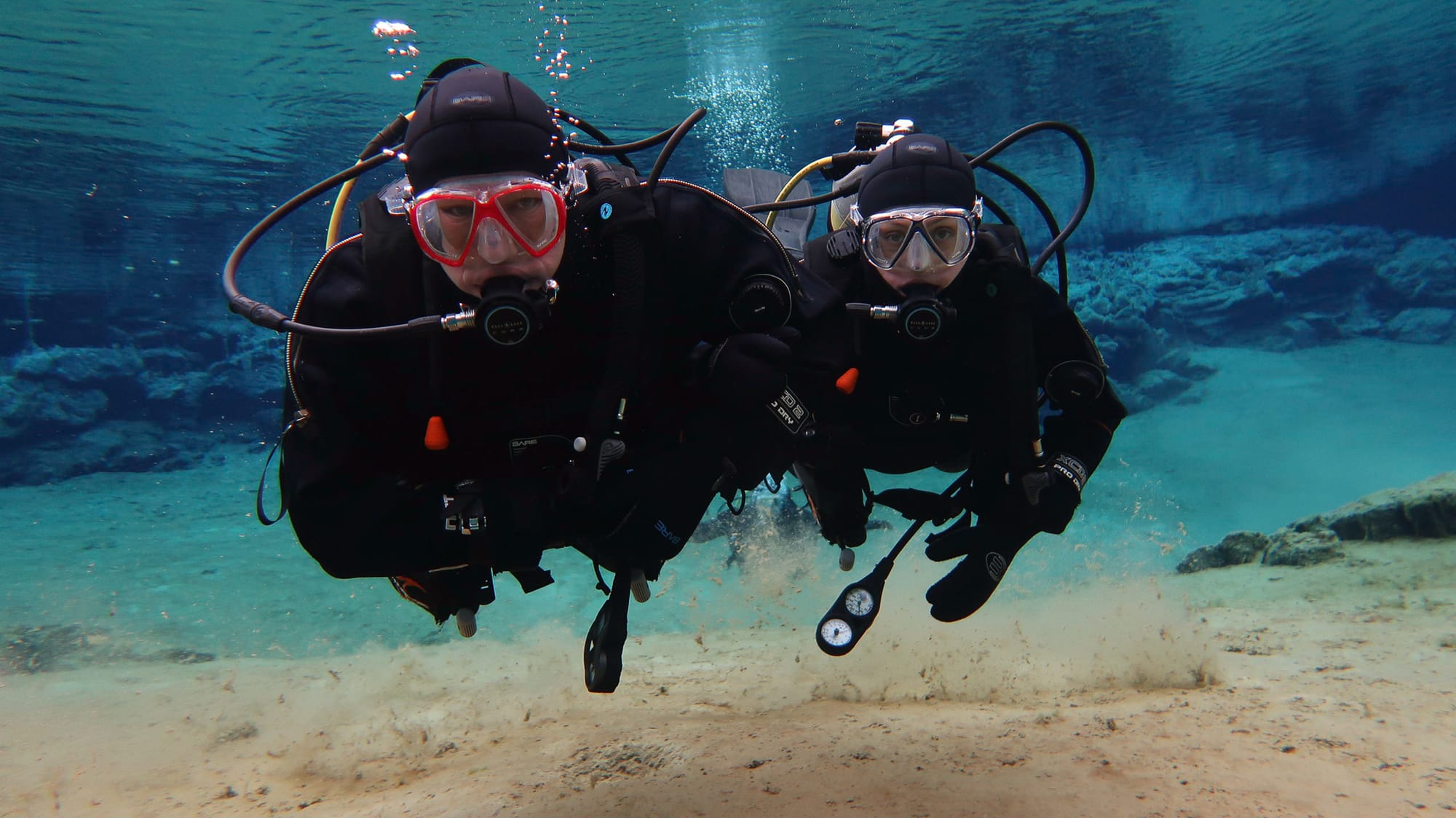
We booked on with DIVE.IS, and completed our dive medicals and equipment sizing online, well before we left Australia. DIVE.IS' system and customer service were seamless and responsive.
We were picked up from our hotel in Reykjavik at about 7:15am and then travelled to Thingvellir National Park for our dive.
As stated, Silfra Fissure lies on the tectonic fissure between the North American and European continental shelves. Above the surface the fissure is a couple of kilometres wide, but underwater you can reach out and touch both continents simultaneously.

The visibility here was nothing short of amazing — it was at least 50m, but the range of vis was limited by the rock shelves and formations in the distance. The water is glacier fed water filtered through the rocks of decades and centuries.
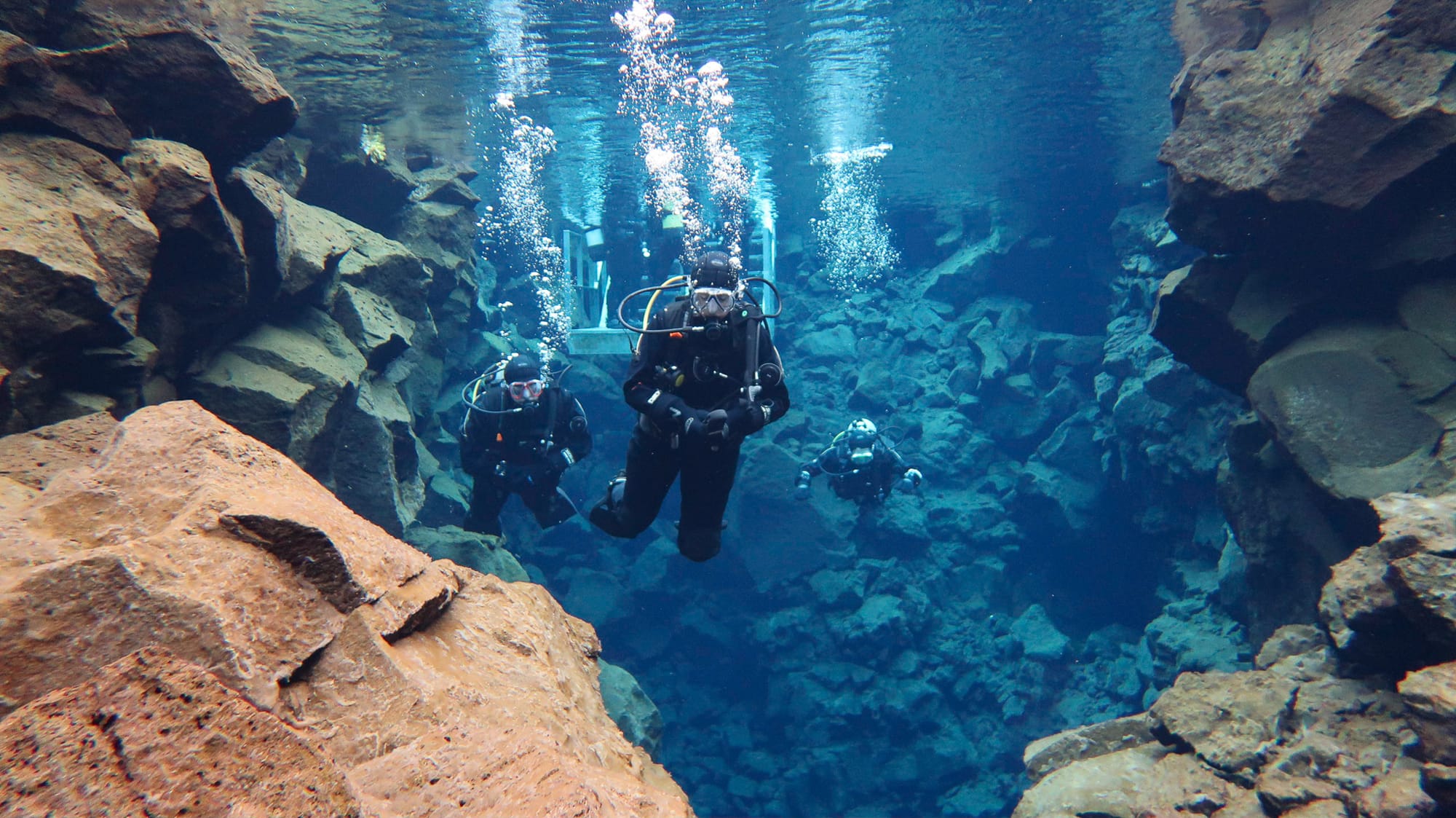
The dive entered at a set of metal stairs onto a metal platform where one group enters at a time, does their buoyancy checks before descending to 5-6m. You swim along, coming back up to the top of a wall in about 1m ,before re-descending to a maximum of 18m (we got to about 15m). After a time you do a left turn into a lagoon, with a separate exit platform followed by a short walk to the carpark.
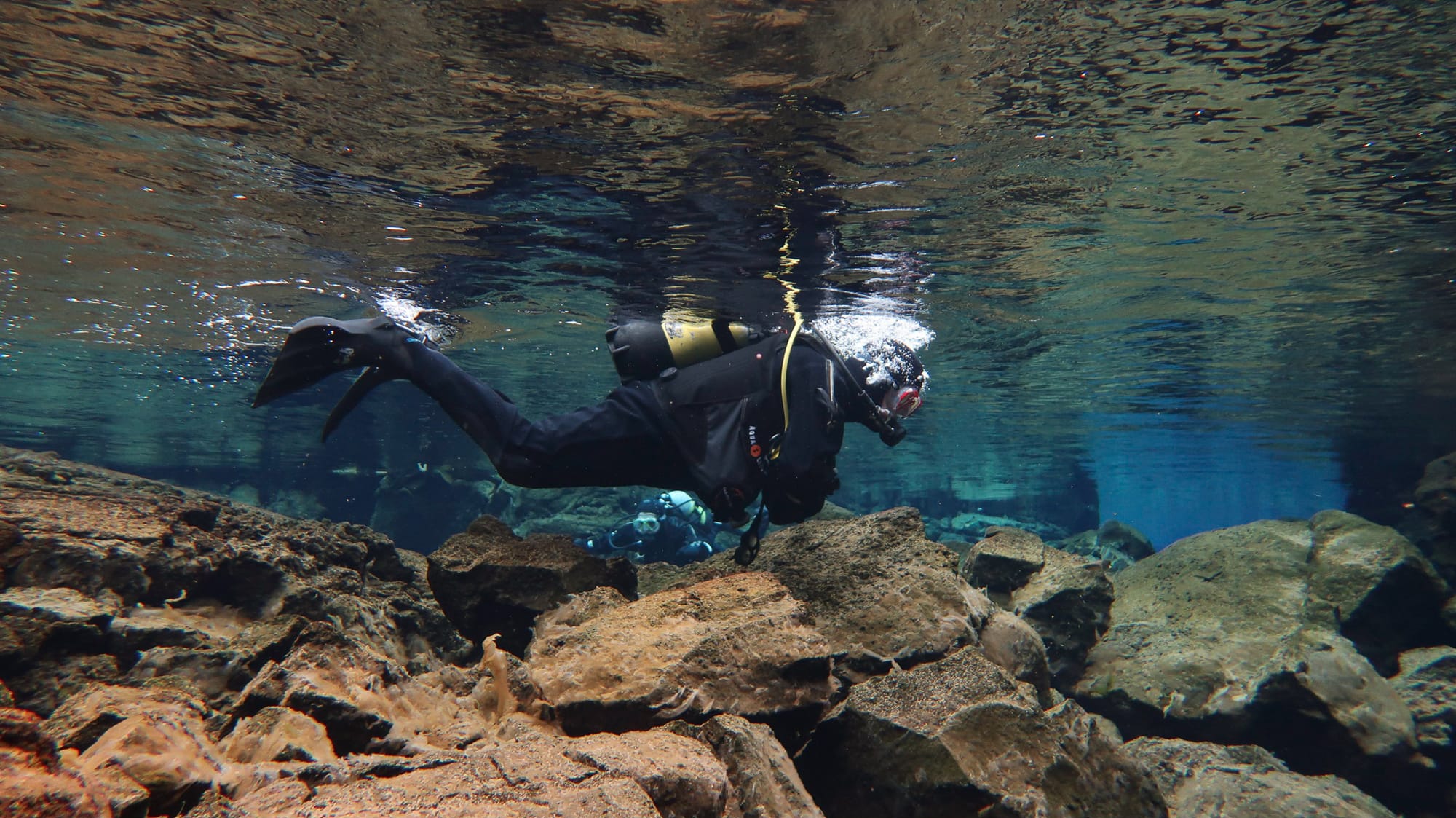
The water was, of course, very cold. While the dive leader (Tanya) stated that the range was 2—4C, my (borrowed) Oceanic OC1 computer showed that the temp got down to <1C. The rental drysuits (Bear hyper crushed neoprene) and undergarments did a perfect job — no leaks. We also wore mitts and a hood, and although these were not sealed they did an adequate job of keeping relatively warm — although the hands did get so cold that you lost most dexterity.

No life to speak of in the fissure — the reason to dive the site is for the site itself, with its spectacular rock formations and crystal clear water. The guide did mention that there are fish in the lake Silfra empties into, but they don’t come back up in into fissure.
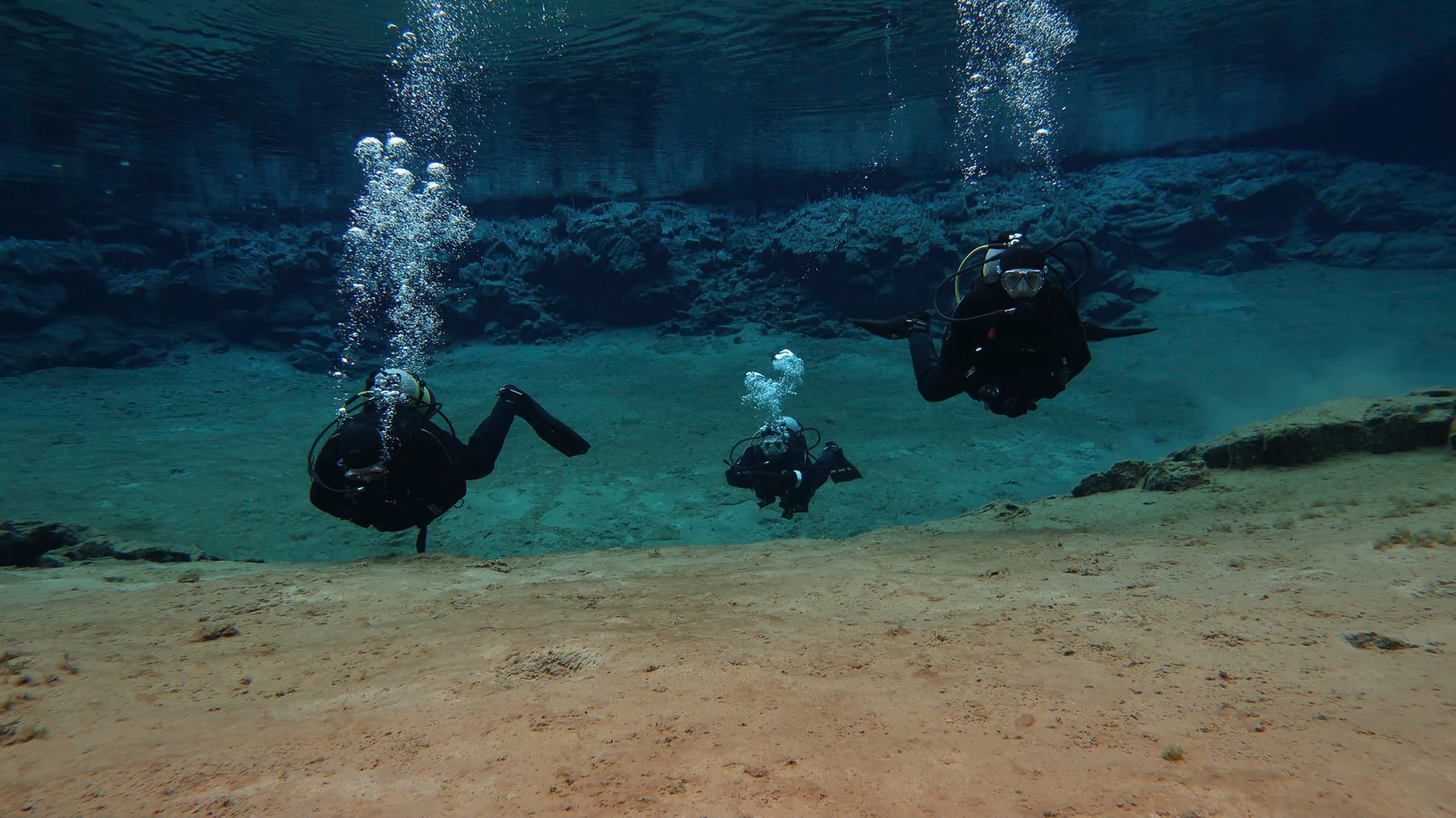
DIVE.IS1 is a professional dive operator, with good equipment, facilities at the dive site and very good leaders. Group sizes were small (3:1 max), and there was a very welcome hot chocolate waiting back in the carpark.
The dive itself was conducted very professionally, following strict safety protocols. There was oxygen at both the entry and exit points, and additional staff were on hand to assist with gearing up and de-kitting, and to assist during entries and exits.
With over 1,500 scuba dives to my name, I have had the opportunity to dive in many very special places, but the experience at Silfra will certainly go down as one of my top five dives to date.
An outstanding dive.
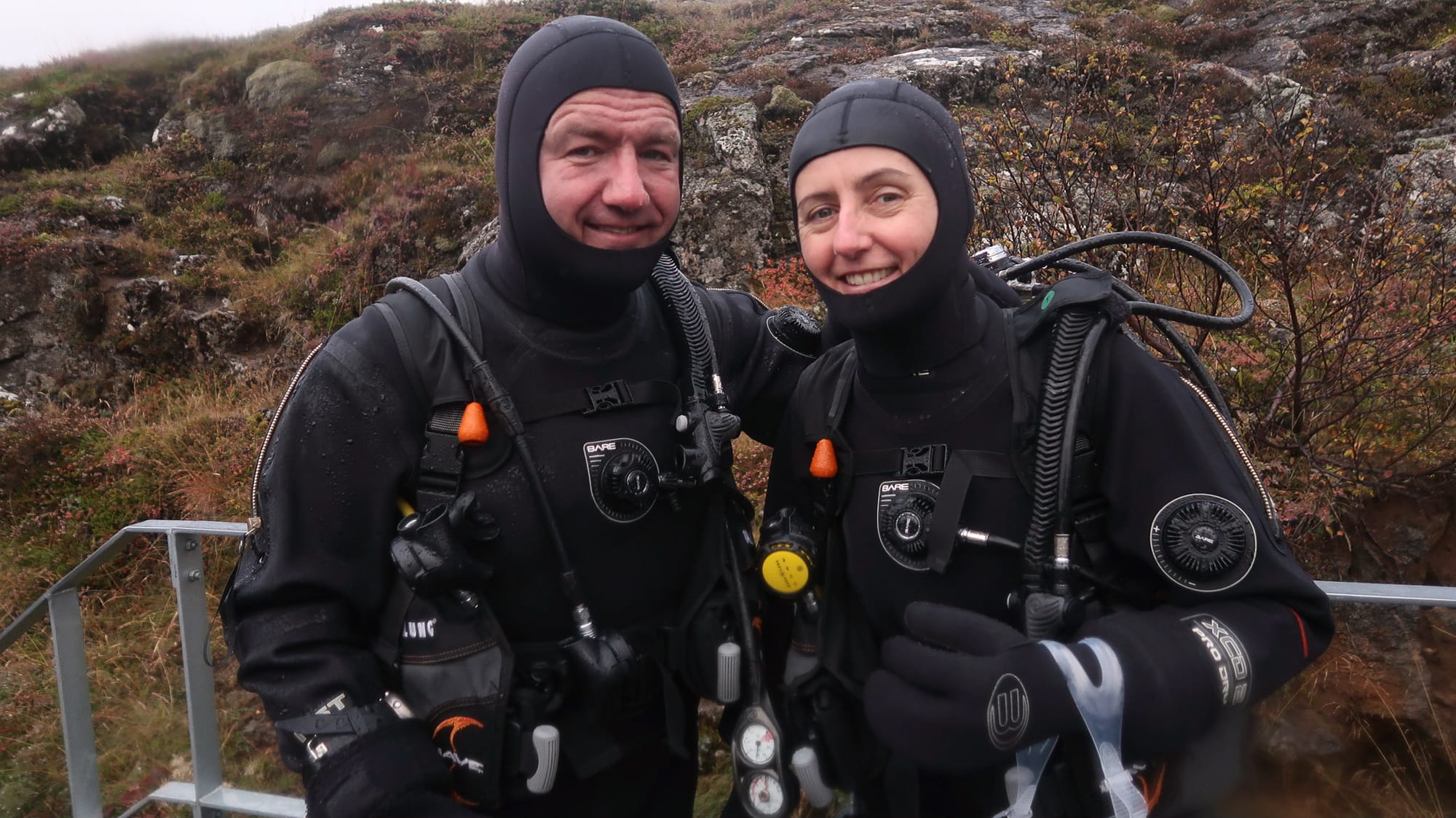
With thanks
Images by Tania Roque of DIVE.IS and used with permission.
- As I write this the world is in the midst of the COVID-19 pandemic. DIVE.IS has suspended tours until things improve, and are currently intending on resuming limited operations in early May. I wish the DIVE.IS team all the best, and look forward to diving with them again in the future. ↩